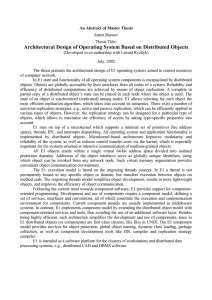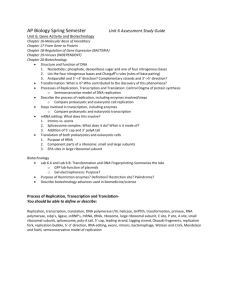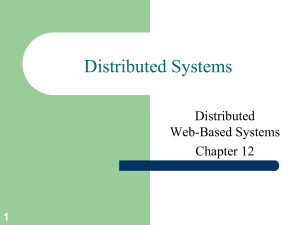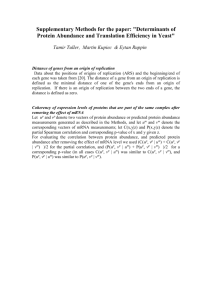Replication landscape of the human genome Nataliya Petryk1,2
advertisement
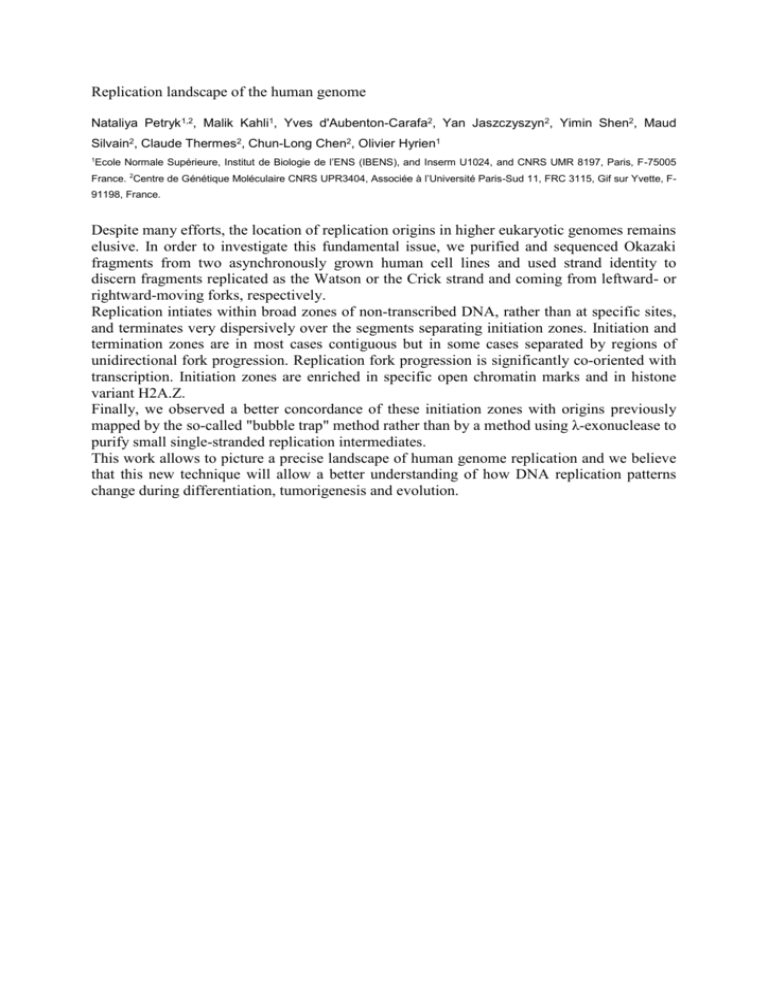
Replication landscape of the human genome Nataliya Petryk1,2, Malik Kahli1, Yves d'Aubenton-Carafa2, Yan Jaszczyszyn2, Yimin Shen2, Maud Silvain2, Claude Thermes2, Chun-Long Chen2, Olivier Hyrien1 Ecole Normale Supérieure, Institut de Biologie de l’ENS (IBENS), and Inserm U1024, and CNRS UMR 8197, Paris, F-75005 1 France. 2Centre de Génétique Moléculaire CNRS UPR3404, Associée à l’Université Paris-Sud 11, FRC 3115, Gif sur Yvette, F91198, France. Despite many efforts, the location of replication origins in higher eukaryotic genomes remains elusive. In order to investigate this fundamental issue, we purified and sequenced Okazaki fragments from two asynchronously grown human cell lines and used strand identity to discern fragments replicated as the Watson or the Crick strand and coming from leftward- or rightward-moving forks, respectively. Replication intiates within broad zones of non-transcribed DNA, rather than at specific sites, and terminates very dispersively over the segments separating initiation zones. Initiation and termination zones are in most cases contiguous but in some cases separated by regions of unidirectional fork progression. Replication fork progression is significantly co-oriented with transcription. Initiation zones are enriched in specific open chromatin marks and in histone variant H2A.Z. Finally, we observed a better concordance of these initiation zones with origins previously mapped by the so-called "bubble trap" method rather than by a method using λ-exonuclease to purify small single-stranded replication intermediates. This work allows to picture a precise landscape of human genome replication and we believe that this new technique will allow a better understanding of how DNA replication patterns change during differentiation, tumorigenesis and evolution.
